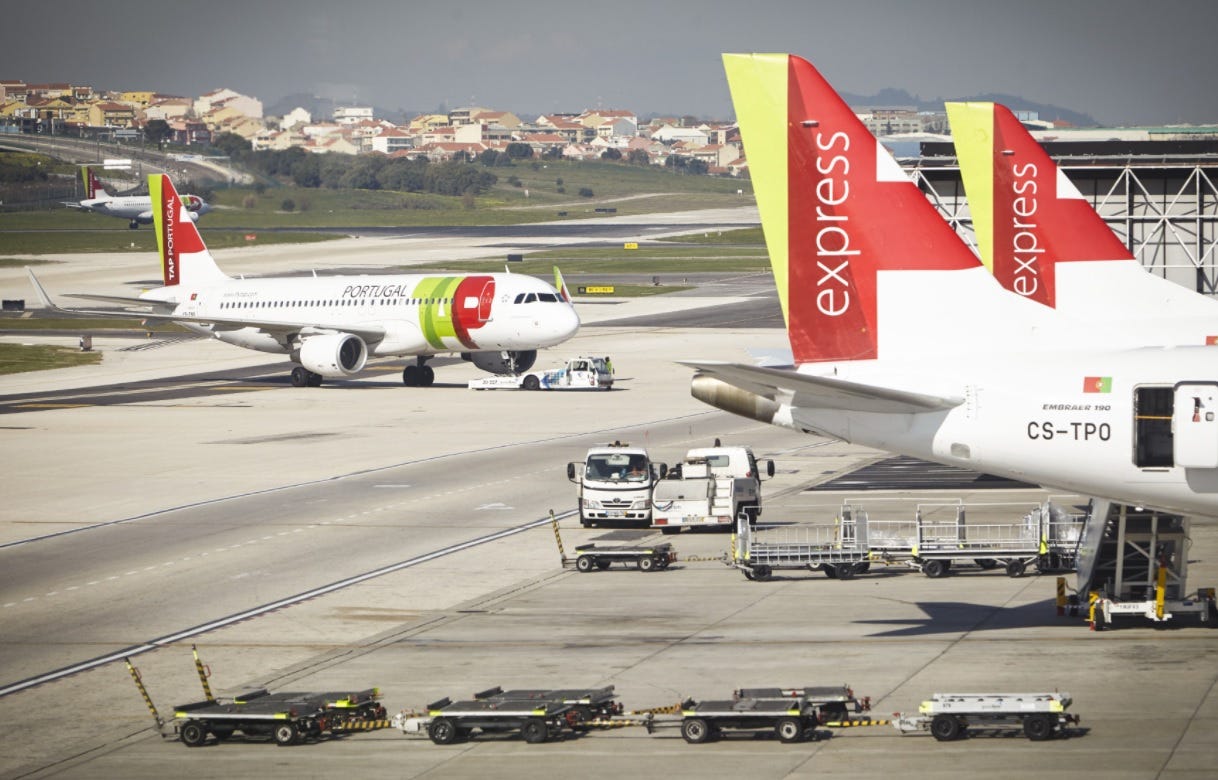People living near Lisbon airport at higher risk of disease
The data points to a 20% increase in the risk of dementia, 12% for diabetes and 7% for high blood pressure.
People who live near Lisbon airport are at greater risk of contracting diseases such as hypertension, diabetes or dementia, according to a study released by the Zero association, which warns of the dangers of exposure to ultrafine particles.
The conclusions come from a study by the European Transport and Environment Federation, which explores the link between ultrafine particles emitted by planes and the health of people living near Europe's 32 busiest airports.
“The study suggests that thousands of cases of high blood pressure, diabetes and dementia, in Lisbon and other cities in Europe, may be linked to these tiny particles emitted by planes, with Lisbon being the city with by far the most people living, work and study near the airport”, says the environmental association Zero, in a statement.
In the case of the Portuguese capital, around 414 thousand people (around 4% of the Portuguese population) live within a five-kilometre radius of Humberto Delgado airport and who, therefore, “are particularly exposed and affected by ultrafine particles” .
The data points to a 20% risk of dementia, 12% for diabetes and 7% for high blood pressure.
According to Zero, the “summary of scientific evidence” to estimate the health impact was made based on data from Schiphol airport, in Amsterdam, capital of the Netherlands.
“These particles are left suspended in the air by planes, disperse widely in the atmosphere, have a diameter a thousand times smaller than a human hair and are invisible. When inhaled, they easily pass through the lungs into the bloodstream and spread throughout the body, which can cause serious long-term health problems, including respiratory, cardiovascular, neurological, endocrine and gestational problems”, warns Zero.
According to the study, it is estimated that ultrafine particles resulting from the activity at Lisbon airport could be the cause of 17,859 cases of hypertension, 21,485 cases of diabetes and 2,121 cases of dementia among the population of the city and surrounding areas.
These numbers represent up to 10% of the population living within a five-kilometer radius of Lisbon airport.
“The study now released complements the 2019 study by Universidade Nova de Lisboa which unequivocally shows that the concentration of ultrafine particles in some areas of Lisbon increases depending on their exposure to the influence of the airport and the movement of planes. Given the proximity of the airport to the city center, the effects of particles extend over significant areas”, highlights Zero.
The most affected areas are in the vicinity of the airport, namely Alvalade, Campo Grande and Cidade Universitária, where the Hospital de Santa Maria, universities, schools and kindergartens are located, and under the approach and take-off route of planes, such as Avenidas Novas , Bairro do Rego, Amoreiras and Campolide.
“This is a situation that is unlike any other European airport, disastrous for the health of the citizens of Lisbon who live and make their lives in these areas, worsening illnesses caused by excess noise”, warns the association.
In total at the airports considered, exposure to ultrafine particles may be associated with 280,000 cases of hypertension, 330,000 cases of diabetes and 18,000 cases of dementia.
“To date, there are no regulations on safe levels of ultrafine particles in the air, despite the World Health Organization (WHO) having warned more than 15 years ago that this is a pollutant of concern”, laments Zero.
In this sense, to reduce the impact of ultrafine particles on health, Zero advocates not expanding the capacity of Humberto Delgado airport and closing it “as soon as possible, as well as promoting the use of sustainable fuels.
“The evidence also shows that airport workers, in particular those who work on the runway, are those who are most exposed to the effects of ultrafine particles, which is why specific measures must be created to protect their health”, they further argue.
New airport by 2030
The coordinator of the Independent Technical Commission (CTI) of the new airport has stated that it is possible to build that airport infrastructure at Campo de Tiro de Alcochete (CTA) before the 2030 football World Cup, if there is good planning.
“Portugal, in all the major initiatives it has had, always has a very strong motivation factor. Either it's Expo 98, or it's the Youth Days. And, perhaps, it’s good to have the World Cup as a justification for having an infrastructure like this prepared to receive the demand that will eventually exist,” she added.
Rosário Partidário spoke to journalists after participating in a meeting, promoted by the civic platform against the construction of the new airport at Montijo Air Base, to celebrate the Government's decision to build the new airport at Campo de Tiro de Alcochete (CTA), which was considered the best option by CTI.
“It is feasible [to build the new airport by 2030] if there is planning, organisation and quick decisions”, highlighted Rosário Partidário.




